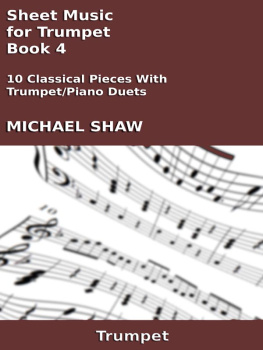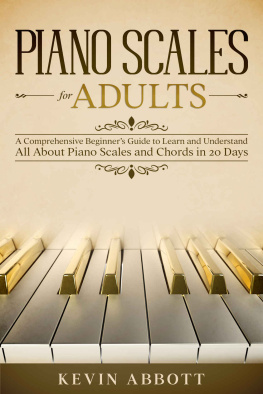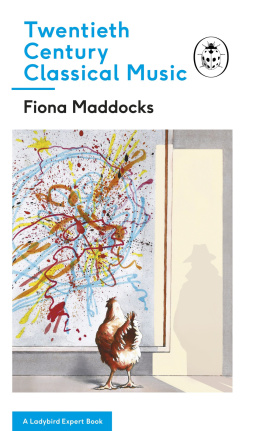THE PIANO

Copyright 2021 Susan Tomes
All rights reserved. This book may not be reproduced in whole or in part, in any form (beyond that copying permitted by Sections 107 and 108 of the U.S. Copyright Law and except by reviewers for the public press) without written permission from the publishers.
For information about this and other Yale University Press publications, please contact:
U.S. Office:
Europe Office:
Set in Arno Pro by IDSUK (DataConnection) Ltd
Printed in Great Britain by TJ Books, Padstow, Cornwall
Library of Congress Control Number: 2021935438
ISBN 978-0-300-25392-4
A catalogue record for this book is available from the British Library.
10 9 8 7 6 5 4 3 2 1
CONTENTS
AUTHORS NOTE
I finished writing the first draft of this book in March 2020 just as lockdown began in the UK because of the coronavirus pandemic. Six months later, I revised it while the country was still in various degrees of lockdown. In the intervening period, when we were stuck in the house, many people told me that they had been playing the piano a lot and finding it good for their mental health. They must have been playing a range of music, but the pieces they kept mentioning were the old classics Bach, Mozart, Beethoven. In June 2020, the New York Times reported that while concerts might have disappeared, sales of pianos for the domestic market had gone up. People kept reporting that they found piano-playing an unexpected solace. Children were practising more; adults were embarking upon piano lessons, and families were singing round the piano or playing music together. For me it was heartening to think that the piano was being such a good companion, and had probably entered upon a new chapter of its history.
INTRODUCTION
Writing this book has been a delight. It has made me realise that, as a pianist, my focus is usually on the particular pieces I am preparing for performance. There are always so many things to think about: interpretation, fingering, memorisation, physical security and all the other aspects of playing in public. Even though the pieces change regularly, another batch of immediate preoccupations takes their place. I have not often stepped back to take a conscious look at the history of piano music and the collective achievement that it represents.
When I took the time to do so, I was deeply impressed by its quality. It seems that for more than two hundred years the piano has been the confidante of most of our greatest composers many of them excellent pianists, who composed at the piano. Aside from the human voice, can there be any other instrument which has inspired such intense and personal music? And can there be any other instrument which has been a constant companion to so many people throughout their lives? In many homes, the piano has provided an emotional outlet, an escape route, a hobby or a focus of aspiration for millions of amateur pianists who, hour after hour, day after day and year after year, sit at the piano, delving into and dreaming their way through this wonderful music.
One of the great things about the piano is that a pianist can play melody and harmony at the same time (not to mention layers of melodies and harmonies). This means the piano is one of the few instruments that can play complete music. Many other instruments, no matter how glorious their tone, play single lines intended to be put together with other lines to form a whole. The piano is self-sufficient, and this is one reason why it has been so successful. There are other keyboard instruments that can play melody and harmony at the same time, such as the harpsichord and the organ, but they are less likely to be in your living room.
Anyone who has acquired a degree of comfort on their chosen instrument will know the extraordinary tactile sensation of producing music from it, as if they are actually creating the material of sound in the same way that, say, bakers produce dough which they mould into different shapes and forms, leaving the impress of their hands upon it. All musical instruments can give their players this sensation, but the piano perhaps more than most, because its music is complex and requires the pianist to play different musical strands with their two hands, thus involving the brain in a particular way. As there are so many notes in the typical piano part, the pianist can have the feeling of interacting with and forming the sound at a microscopically detailed level, a bit like an expert embroiderer whose tiny stitches multiply to luxuriant effect.
Keyboard instruments go back many centuries, and a survey could encompass Elizabethan music for the virginals, or seventeenth- and eighteenth-century music for the harpsichord. However, I have taken as my starting point the emergence of the piano as the leading keyboard instrument. In simple terms, this change took place in the eighteenth century when the plucking quills of the harpsichord and the metal tangents of the clavichord were replaced by the covered hammers of the piano. This produced a different attack on the strings and new expressive possibilities, because the pianist, unlike the harpsichordist, could vary the tone between loud and soft at will (as one can with a clavichord to a limited extent). The pianos range of tone and tonal projection increased as piano makers found ways to enlarge and strengthen the frames of their instruments.
Music written for the piano took on a different quality from that written for earlier keyboards. The piano very quickly became popular with players and audiences, and when it was made affordable for the general public in the early nineteenth century it proved an essential item in many music-loving homes. It was considered a desirable possession even in homes where nobody played the piano. By the 1870s the French novelist Gustave Flaubert in his Dictionary of Accepted Ideas described the piano as indispensable in a salon, and in the early twentieth century the American president Calvin Coolidge said that We cannot imagine a model New England home without the family Bible on the table and the family piano in the corner. Even now, surveys show that the piano is still by some margin the instrument that people would most like to be able to play.
Today, the piano still uses that basic mechanism, its hammers covered in layers of compressed felt. In an era of electronic gadgets, it may come as a surprise to people to look into the workings of a grand piano and see that it still looks much as it would have to Beethoven. This is not because piano makers have been lazy since Beethovens day, but because the design of the acoustic piano is a classic. It has been continuously upgraded, its mechanism refined but not essentially changed. Even the inventors of modern digital keyboards have based their sound on that of the acoustic piano, and have found ingenious ways to give the player the sensation that they are playing a leading brand of concert piano.
One of the pianos great blessings is its versatility. Solo piano music gets most of the limelight, but the piano plays a huge role in the world of collaborative music duets for two players at one piano, duos for two pianos, pieces for violin and piano, cello and piano, piano trio (piano with violin and cello), piano quartets and quintets, piano with one or more wind instruments, piano as a soloist with orchestra, piano as an orchestral instrument, piano with chorus, piano with narrator, piano for ballet class, piano in church, piano for opera rehearsals, piano in pop groups, piano in hotel lounges ... the piano plays its part in a vast range of activities.
It also plays a crucial role in song repertoire, a very important field which tends to attract its own specialists, professional pianists who work almost exclusively with singers. From the very beginning of music history, songs have been of fundamental importance. The powerful combination of words and music is enhanced by the natural human rapport we feel with singers; their effortless primacy brings a particular dynamic to any musical collaboration in which they are involved. This often leads to their pianists being referred to as accompanists, and in fact many professional accompanists have made their peace with this term, knowing that their role is vital yet understanding that audiences cannot help responding first and foremost to the singer. In purely instrumental music, however, the piano does not face this unequal dynamic. Much as I would have liked to include song cycles such as Schuberts
Next page










